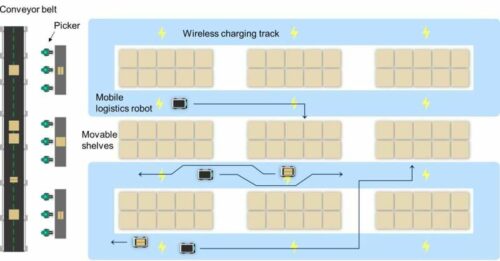The future of driving features wireless charging technology for electric vehicles, which allows drivers to power up on the move, reduce pollution, and enhance efficiency.

Electric vehicle (EV) technology developments are leading to innovations that minimize the search for charging stations. A research team associated with UNIST has created a technology that allows for wireless power transfer to vehicles on the move. The group has launched a wireless charging track system that provides continuous power to moving vehicles.
The advanced system produces a broad and robust magnetic field via a wired network, enabling vehicles to move freely forward and backward, eliminating the need for costly ferromagnetic materials.
When an electric current passes through an electromagnetic generator, a circular magnetic field is generated, enhancing power transfer as the field extends across multiple wires. This allows electric vehicles to navigate with ease along the power supply tracks created by this expansive magnetic field.
Furthermore, the team has developed algorithms to refine the design of power supply tracks and power receivers, boosting power transfer efficiency for electric vehicles by up to 90%. While traditional methods have relied on ferromagnetic materials to improve efficiency, these techniques often encounter practical difficulties due to their high costs and limited durability.
To guarantee the practical implementation of this wireless power supply technology, the research team has carried out comprehensive safety verifications, ensuring adherence to standards established by the Institute of Electrical and Electronics Engineers (IEEE) and the International Commission on Non-Ionizing Radiation Protection (ICNIRP).
The researchers say that transportation, including electric vehicles, should be able to move flexibly in parallel and vertically; however, existing dynamic wireless charging technologies have yet to achieve this.
The team noted that implementing this technology in EVs could address the challenges of long charging times and short driving ranges. Additionally, by reducing battery size, air pollution stemming from resource extraction, such as lithium, can be decreased, promoting the sustainable use of natural resources.
Reference: Hyunkyeong Jo et al, A coreless track-type seamless wireless charging system using co-planar wires enabling quasi-free planar movements for mobile logistics robots, Applied Energy (2024). DOI: 10.1016/j.apenergy.2024.123943






